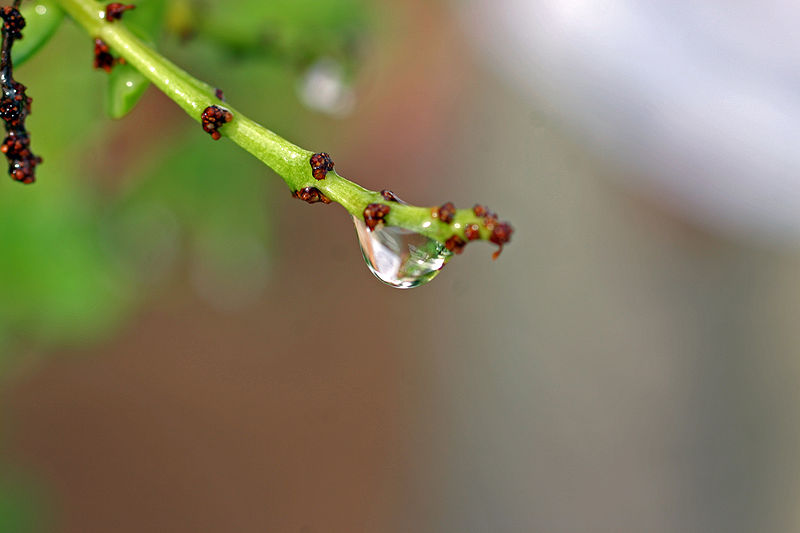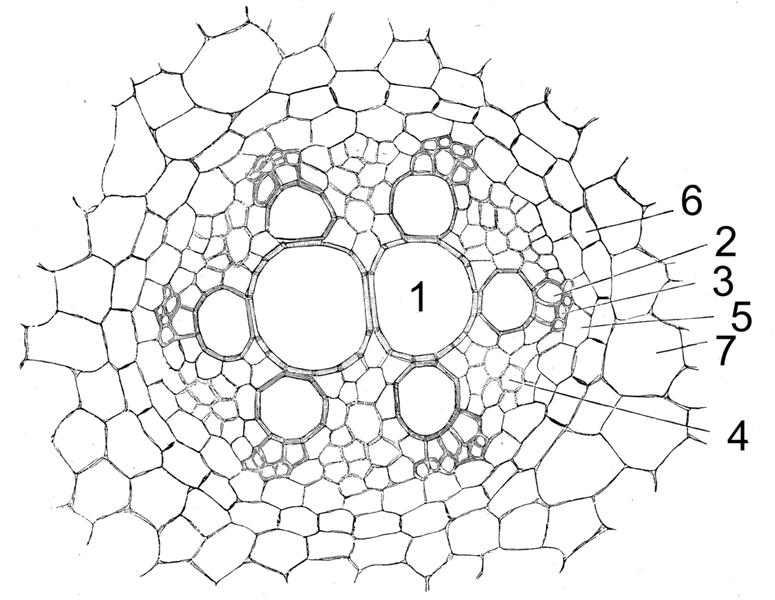Nutrition
If you have already checked out the
Classification page you would know that Chenopodium a. is a
member of the angiosperms, meaning it is a flowering plant. With
the exception of a very limited number of plants nearly all of
plants receive the energy they use for growth and all other
processes necessary for the sustenance of life from the conversion of light energy to usable
energy in the form of sugars. This process is more commonly known as photosynthesis. Photosynthesis is detailed in the diagram
to the right, but just as an overview I will
briefly go over some of the main points of the photosynthetic
pathway. Photosynthesis is a process that occurs within the
chloroplasts which are mostly located in the leaf region of the
plant. The chloroplasts contain chlorophyll, the green pigment
of the plant responsible for both the coloration of the leaves
and absorption of light. Within the chlorophyll, water, gas, and
light energy go through a reaction process that ends up
producing sugar (glucose) and oxygen gas. The overall reaction
is shown below. This is known as the light
dependent step in the photosynthetic pathway, because without
light this initial part of the reaction would not be able to
occur. The glucose that is produced through this complex pathway is the primary nutrient
source of the plant.
as an overview I will
briefly go over some of the main points of the photosynthetic
pathway. Photosynthesis is a process that occurs within the
chloroplasts which are mostly located in the leaf region of the
plant. The chloroplasts contain chlorophyll, the green pigment
of the plant responsible for both the coloration of the leaves
and absorption of light. Within the chlorophyll, water, gas, and
light energy go through a reaction process that ends up
producing sugar (glucose) and oxygen gas. The overall reaction
is shown below. This is known as the light
dependent step in the photosynthetic pathway, because without
light this initial part of the reaction would not be able to
occur. The glucose that is produced through this complex pathway is the primary nutrient
source of the plant.
Overall reaction of photosynthesis; 6CO2 + 6H2O + (light energy)----> Glucose + 6O2.
The above is just an explanation of how the majority of plants get their energy, and better yet it is an overview of the basics of photosynthesis; however, many plants have unique adaptations that help them grow better or withstand many diverse environments. Members of the Caryophyllales utilize a unique photosynthetic pathway that is slightly different than what the C3 or CAM plants undergo. Chenopodium ambrosioides is actually considered a C4 plant which refers to the fact that carbon dioxide is first incorporated into a four carbon chain. See Adaptation for more detail.
Photosynthesis is the process by which plants go
about acquiring energy for themselves, but how do plants take in
water? Water is critical to life for
plants, without which there would be no processes of photosynthesis.
Is water 'sucked' in by the roots and actively transported to the
tops of the trees where the water is most crucial? Does water
magically reach the tops of plants with no understanding of this
process by humans? Of course not, but the process is much more
elaborate than one might expect, in fact water transport by plants
completely blows my mind. The mechanism of water transport is
somewhat complex so I will not describe this process in gory detail,
but a basic understanding of this natural 'mystery' will be quite
enough for now.
processes of photosynthesis.
Is water 'sucked' in by the roots and actively transported to the
tops of the trees where the water is most crucial? Does water
magically reach the tops of plants with no understanding of this
process by humans? Of course not, but the process is much more
elaborate than one might expect, in fact water transport by plants
completely blows my mind. The mechanism of water transport is
somewhat complex so I will not describe this process in gory detail,
but a basic understanding of this natural 'mystery' will be quite
enough for now.
There are two major transport tissues in plants.
The first, phloem (indicated by number 4 in the photo below), carries the nutrients produced in the leaves via
photosynthesis down to the rest of the plant and the second
transport tissue, xylem (indicated by number 1 in the photo below), is responsible for the transport of water
from the roots to the rest of the plant. These processes are driven
by pressure differences. In nutrient transport of sugars they move
from areas of high concentration (where they are being produced) to
areas of low concentration (areas that are consuming sugars for
metabolism). Movement goes from the top of the plant to the root
system and nutrients are 'dropped' off along the way. Getting water from the roots to the leaves and stems
is not a simple process, but in its most condensed form this process relies on
concentration differences, similar to the transport of water. When a plant is undergoing
photosynthesis there are special cells in these areas known as
stomata that are open to the external environment. The stomata allow the plant to take in the
carbon dioxide they need to go through the photosynthetic pathway
and produce usable energy for themselves. Because
these stomata are open, some evaporation will take place in the cells
adjacent to the stomata therefore increasing the solute
concentration in these cells and decreasing their water potential.
This sets up a pressure difference between the cells. The cells closest to
the stomata now have a high solute concentration and the cells closest
to the roots have a low solute concentration. Water passively flows
from the soil into the plants and up the xylem to the points of
highest solute concentration. There are many intermediate steps to this
process that I have left out, but in its simplest form this is how
nutrients and water are transported in cells. If you can keep in
mind the pressure differences it is easy to track the net flow of
the nutrients and water.
and nutrients are 'dropped' off along the way. Getting water from the roots to the leaves and stems
is not a simple process, but in its most condensed form this process relies on
concentration differences, similar to the transport of water. When a plant is undergoing
photosynthesis there are special cells in these areas known as
stomata that are open to the external environment. The stomata allow the plant to take in the
carbon dioxide they need to go through the photosynthetic pathway
and produce usable energy for themselves. Because
these stomata are open, some evaporation will take place in the cells
adjacent to the stomata therefore increasing the solute
concentration in these cells and decreasing their water potential.
This sets up a pressure difference between the cells. The cells closest to
the stomata now have a high solute concentration and the cells closest
to the roots have a low solute concentration. Water passively flows
from the soil into the plants and up the xylem to the points of
highest solute concentration. There are many intermediate steps to this
process that I have left out, but in its simplest form this is how
nutrients and water are transported in cells. If you can keep in
mind the pressure differences it is easy to track the net flow of
the nutrients and water.
Next:
Adaptation
Back to
Home